Articles
- Page Path
- HOME > Restor Dent Endod > Volume 31(2); 2006 > Article
- Original Article Comparative study on morphology of cross-section and cyclic fatigue test with different rotary NiTi files and handling methods
- Jae-Gwan Kim1, Kee-Yeon Kum2, Eui-Seong Kim1
-
2006;31(2):-102.
DOI: https://doi.org/10.5395/JKACD.2006.31.2.096
Published online: March 31, 2006
1Department of Conservative Dentistry, Yonsei University, Korea.
2Department of Conservative Dentistry, Dental Research Institute, Seoul National University, Korea.
- Corresponding Author: Eui-Seong Kim. Department of conservative Dentistry, College of Dentistry, Yonsei University, 134 Shinchon-Dong, Seodaemoon Gu, Seoul, Korea, 120-752. Tel: 82-2-361-8711, Fax: 82-2-313-7575, andyendo@yumc.yonsei.ac.kr
• Received: October 13, 2005 • Revised: December 28, 2005 • Accepted: January 26, 2006
Copyright © 2006 Korean Academy of Conservative Dentistry
- 927 Views
- 0 Download
- 3 Crossref
Abstract
- There are various factors affecting the fracture of NiTi rotary files. This study was performed to evaluate the effect of cross sectional area, pecking motion and pecking distance on the cyclic fatigue fracture of different NiTi files. Five different NiTi files-Profile®(Maillefer, Ballaigue, Switzerland), ProTaper™ (Maillefer, Ballaigue, Switzerland), K3® (SybronEndo, Orange, CA), Hero 642® (Micro-mega, Besancon, France), Hero Shaper®(Micro-mega, Besancon, France)-were used. Each file was embedded in temporary resin, sectioned horizontally and observed with scanning electron microscope. The ratio of cross-sectional area to the circumscribed circle was calculated. Special device was fabricated to simulate the cyclic fatigue fracture of NiTi file in the curved canal,. On this device, NiTi files were rotated (300rpm) with different pecking distances (3 mm or 6 mm) and with different motions (static motion or dynamic pecking motion). Time until fracture occurs was measured. The results demonstrated that cross-sectional area didn't have any effect on the time of file fracture. Among the files, Profile® took the longest time to be fractured. Between the pecking motions, dynamic motion took the longer time to be fractured than static motion. There was no significant difference between the pecking distances with dynamic motion, however with static motion, the longer time was taken at 3mm distance. In this study, we could suggest that dynamic pecking motion would lengthen the time for NiTi file to be fractured from cyclic fatigue.
- 1. Serene TP, Adams JD, Saxena A. Nickel-Titanium instruments: applications in Endodontics. 1995;St.Louis: Ishiyaku EuroAmerica, Inc.
- 2. Yoneyama T, Doi H, Hamanaka H. Influence of composition and purity on tensile properties of NiTi alloy castings. Dent Mater J. 1992;11: 157-164.ArticlePubMed
- 3. Walia HM, Brantley WA, Gerstein H. An initial investigation of the bending and torsional properties of nitinol root canal files. J Endod. 1988;14: 346-351.ArticlePubMed
- 4. Stoekel D, Yu W. Superelastic NiTi wire. Wire J Int. 1991;3: 45-50.
- 5. Glossen CR, Haller RH, Dove SB, del Rio CE. A comparison of root canal preparations using NiTi hand, NiTi engine driven, and K-Flex endodontic enstruments. J Endod. 1995;21: 146-151.PubMed
- 6. Cohen S, Burns RC. Pathways of the pulp. 1998;7th ed. St.Louis: Mosby Year Book, Inc; 255.
- 7. Serene TP, Adams JD, Saxena A. Nickel-Titanium instruments: applications in Endodontics. 1995;St.Louis: Ishiyaku EuroAmerica, Inc; 62-63.
- 8. Zelada G, Varela P, Martin B, Bahilo JG, Magan F, Ahn S. The effect of rotational speed and the curvature of root canals on the breakage of rotary endodontic instruments. J Endod. 2002;28: 540-542.ArticlePubMed
- 9. Pruett JP, Clement DJ, Carnes DL. Cyclic fatigue testing of nickel-titanium endodontic instruments. J Endod. 1997;23: 77-85.ArticlePubMed
- 10. Turpin YL, Chagneau F, Vulcain JM. Impact of two theoretical cross-sections on torsional and bending stresses of nickel-titanium root canal instrument models. J Endod. 2000;26: 414-417.ArticlePubMed
- 11. Li UM, Lee BS, Shih CT, Lan WH, Lin CP. Cyclic fatigue of endodontic nickel titanium rotary instruments: Static and dynamic tests. J Endod. 2002;28: 448-451.ArticlePubMed
- 12. Shin YM, Kim ES, Kim KM, Kum KY. Effect Of surface defects and cross-sectional configuration on the fatigue fracture of NiTi rotary files under cyclic loading. J Korean Acad Conserv Dent. 2004;29: 267-272.Article
- 13. Park WK, Lee HJ, Hur B. Sahping ability of NiTi rotary files. J Korean Acad Conserv Dent. 2004;29: 44-50.Article
- 14. Lee JH, Kim MJ, Seok CI, Lee WC, Baek SH. Evaluation of canal preparation with NiTi rotary files by micro computed tomography. J Korean Acad Conserv Dent. 2004;29: 378-385.Article
- 15. Haïkel Y, Sefaty R, Bateman G, Senger B, Allemann C. Dynamic and cyclic fatigue test of engine-driven rotary nicketl titanium endodontic instruments. J Endod. 1999;25: 434-440.PubMed
REFERENCES
Tables & Figures
REFERENCES
Citations
Citations to this article as recorded by 

- Comparative Study Assessing the Canal Cleanliness Using Automated Device and Conventional Syringe Needle for Root Canal Irrigation—An Ex-Vivo Study
Keerthika Rajamanickam, Kavalipurapu Venkata Teja, Sindhu Ramesh, Abdulaziz S. AbuMelha, Mazen F. Alkahtany, Khalid H. Almadi, Sarah Ahmed Bahammam, Krishnamachari Janani, Sahil Choudhari, Jerry Jose, Kumar Chandan Srivastava, Deepti Shrivastava, Shankarg
Materials.2022; 15(18): 6184. CrossRef - Vibrations Generated by Several Nickel-titanium Endodontic File Systems during Canal Shaping in an Ex Vivo Model
Dong-Min Choi, Jin-Woo Kim, Se-Hee Park, Kyung-Mo Cho, Sang Won Kwak, Hyeon-Cheol Kim
Journal of Endodontics.2017; 43(7): 1197. CrossRef - Effect of cross-sectional area of 6 nickel-titanium rotary instruments on the fatigue fracture under cyclic flexural stress: A fractographic analysis
Soo-Youn Hwang, So-Ram Oh, Yoon Lee, Sang-Min Lim, Kee-Yeon Kum
Journal of Korean Academy of Conservative Dentistry.2009; 34(5): 424. CrossRef
Comparative study on morphology of cross-section and cyclic fatigue test with different rotary NiTi files and handling methods
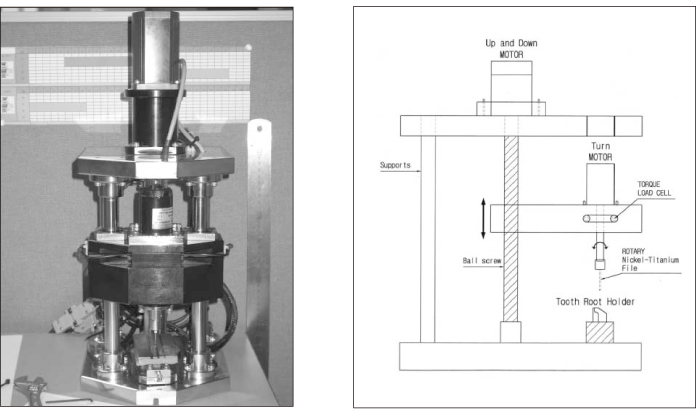
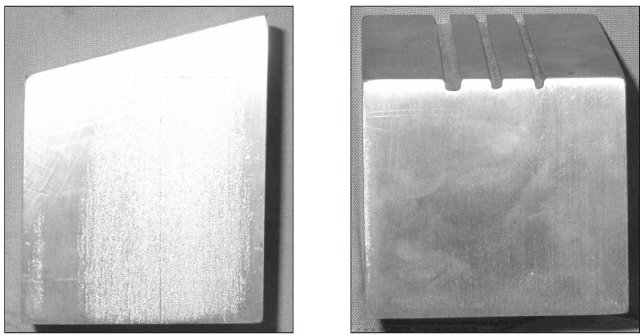
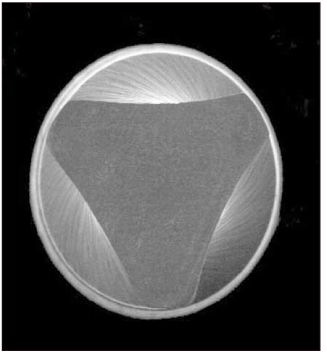
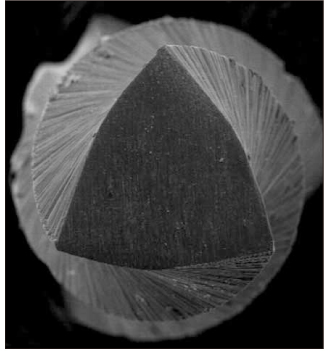
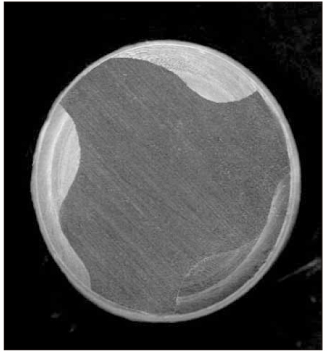
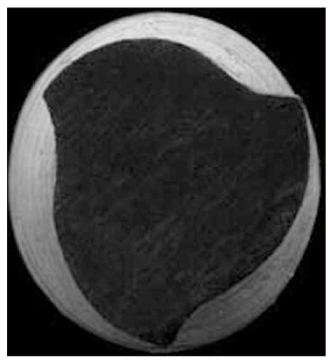
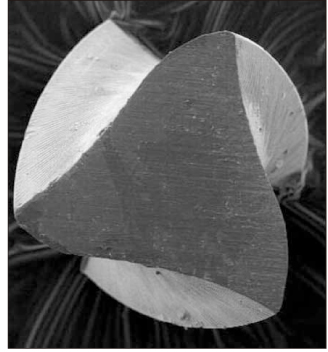
Figure 1
Photograph and schematic diagram of device used in the experiment.
Figure 2
Sliding metal block with having guiding path.
Figure 3
Cross-sectional electronic microscopic photograph of Profile®.
Figure 4
Cross-sectional electronic microscopic photograph of ProTaper™.
Figure 5
Cross-sectional electronic microscopic photograph of K3®.
Figure 6
Cross-sectional electronic microscopic photograph of Hero 642®.
Figure 7
Cross-sectional electronic microscopic photograph of Hero Shaper®.
Figure 1
Figure 2
Figure 3
Figure 4
Figure 5
Figure 6
Figure 7
Comparative study on morphology of cross-section and cyclic fatigue test with different rotary NiTi files and handling methods
NiTi rotary files used in this experiment
Average fracture time and standard deviation(second)
Table 1
NiTi rotary files used in this experiment
Table 2
Average fracture time and standard deviation(second)

 KACD
KACD









 ePub Link
ePub Link Cite
Cite

